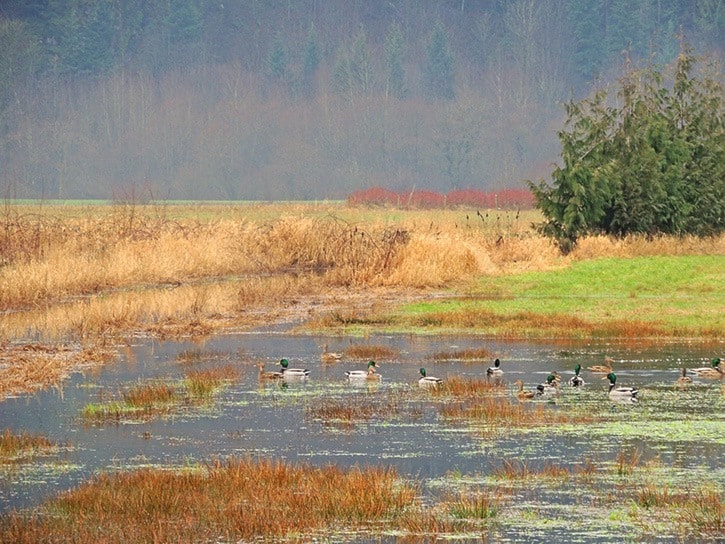According to an article published in the Observer last week (Agassiz farmer outlines water woes, Jan 30), ditch maintenance is the District of Kent ?has slowed right down?. Yet, the number of kilometers of ditch clearing permitted by the Department of Fisheries and Oceans (DFO) and the Provincial agency increased from 4.8 km in 2008 to 20 km in 2012.
The only maintenance request denied in 2013 was at the lower end of the McCallum, where it enters Mountain Slough. This area is the primary spawning area in the entire Mountain Slough watershed for salmon, trout, Salish sucker and other fish, depending on the time of year. At the mouth of the McCallum there is also habitat for Oregon Spotted Frog. Done properly, a project to widen the lower McCallum could benefit drainage, fish and frogs. Discussions with landowners have occurred and I can only hope that an agreement will be reached to allow such a project to occur.
I recognize that McCallum Ditch provides critical drainage to farmland, but that is not its sole purpose or value. In fact, despite its accepted name, McCallum Ditch is, and always has been a salmon stream. Coho salmon along with cutthroat trout, rainbow trout and the endangered Salish sucker are found to its uppermost reaches east of Highway 9. Its channel is clearly shown on a 1905 map as existing prior to any farming in the area (published in the Observer in February 2011).
As for why the lower McCallum system is "not performing well", there is likely a combination of factors, including:
1. Invasive species, especially reed canary grass, which quickly grow back after removal from ditches, fueled by sunlight nutrient-rich sediment, and over-application of manure.
2. The removal of woody shrubs and trees, and with them the shade that keeps invasive plant species in check.
3. More sediment in the ditches, as former pastures are converted to corn, berries and other crops that expose more soil to erosion.
4. The narrowing of the main channel of McCallum by infilling by a landowner.
5. Infilling of wetlands and seasonal ditches by landowners. This reduces the capacity of the entire system.
6. Gravel mining on the surrounding hillsides, which reduces the "filtering effect" of gravel deposits and allows water for to flow more rapidly down to the flood plain. Hillside logging adds to the problem.
Improved farm practices are far more likely to improve drainage than finger pointing at fish and regulators.
Mike Pearson, PhD, RPBio
Agassiz
